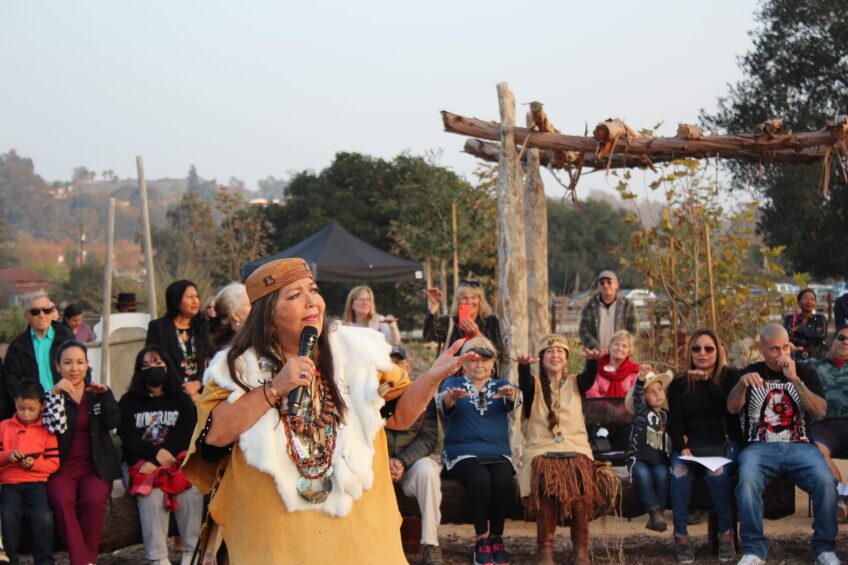New Orange County Park Space is a Gathering Space for Indigenous Americans

Indigenous oral histories relate that, long ago, a female leader named Coronne (sometimes spelled Karoni) brought a group to the spring here near the confluence of Oso Creek and Trabuco Creek, after they had outgrown their water supply to the north. Here in the town of Putuidem, Coronne led her people well, then died suddenly. Her body became a mound of earth and the grieving townspeople comforted each other by sleeping in a pyramid of bodies called acjachema, leading to the name of Coronne's nation: the Acjachemen people.
For thousands of years, this town was a central hub for the Indigenous people of Orange County. Spanish invaders called the Acjachemen nation Juaneño, after the mission at San Juan Capistrano. European animals devastated native ecologies, driving Native people into unfree labor in the nearby mission. The Spanish crown claimed possession of this land and distributed it in enormous land grants to retired soldiers.
Since the late 1700s, Acjachemen people have been working to reclaim stewardship of their land. In the twentieth century, the city of San Juan Capistrano called this "Northwest Open Space," but to Acjachemen people, it has remained Putuidem and been an ongoing gathering space.
Explore some of the spaces in Orange County shaped by conservatism and activism. Click on the starred map points to read more in-depth stories.
In 2003, when the nearby private Catholic school constructed its athletic facilities here, Acjachemen people protested. Leaders of Junipero Serra High School — which is named after the priest who founded California's missions and devastated California's Native people — ignored those protests. In 2015, the City of San Juan Capistrano began working with Acjachemen activists to create a small park here, on one fragment of Putuidem not covered by Serra's athletic fields.
After several years of budgetary and bureaucratic delays, in 2021, Putuidem park finally opened. It features traditional dwellings called kiichas alongside historic signs, stone grinding tools, log benches, ramadas for shade and a large amphitheater for gatherings.
Jacque Nuñez, a member of the Acjachemen Nation, told the Orange County Register, "I'm so thrilled because never again do I have to say to the children, 'Close your eyes and imagine that there are dwellings that look like igloos and they're made with grasses.' Because when they come here, they will see it." After years of successful activism, Acjachemen people are once again the stewards of this area.


